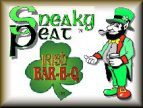The Raleigh Irish Festival was born from an established Irish event which has been hosted by Ancient Order of Hibernians Wake County Division # 1 over the years at the Knights of Columbus. This event started out as an Irish family picnic – and over the years grew into an Irish music fest. The fest had been outgrowing the space at The Knights hall for quite a while – so organizers from various Irish establishments and organizations got together and started talking about hosting the event in the most central place we could find so more people would be able to come and be part of the culture and heritage we are all so very proud of.
- Food will be on sale & provided by Moore Square restaurant’s
- The Irish Pub is brought to you by Sam Adams Brewery
- Entertainment is sponsored by various individuals and local business
- Sponsors can be found on Sponsor page



































